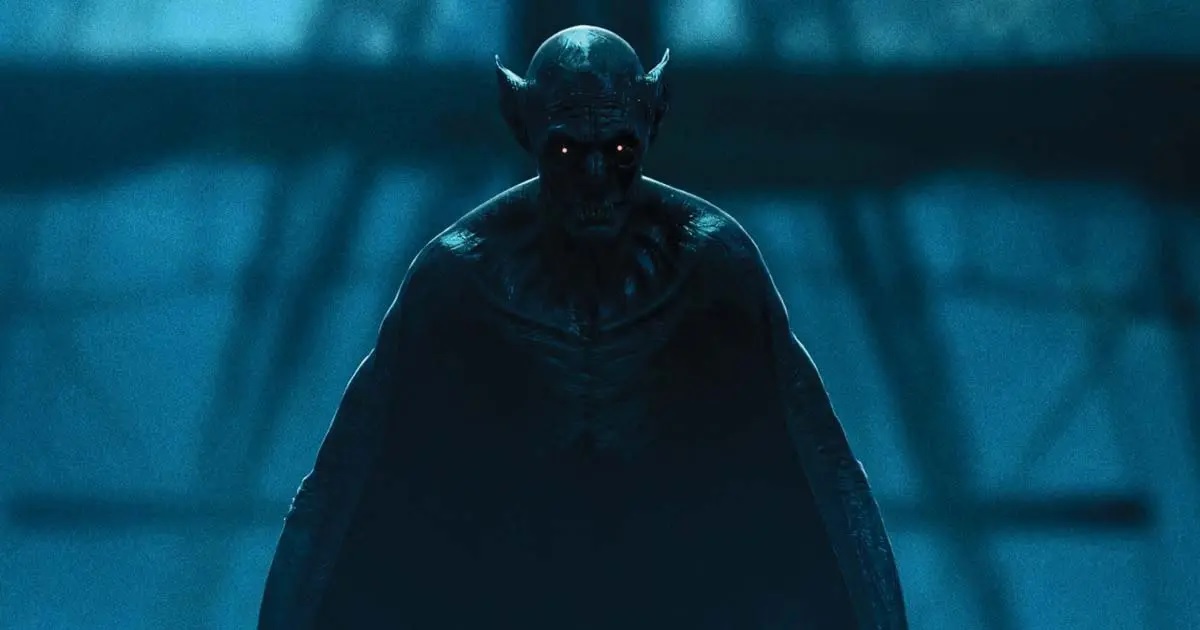Did you know that the fictional events of The Demeter take place only 15 years removed from the real sea disaster we know as The Titanic? I say this because if you watch these films back-to-back you’d swear they represented epochs hundreds of years removed from one another. Nope. Why, one could have seen the wreckage from The Demeter first-hand and a decade later been among those who helped piece The Titanic together … making sure the latter was vampire proof, and, hence, problem free, right?
“How hard are you looking?” was a question that came to mind when the dwindling number of Demeter boathands realize there’s a vampire on board. Cuz, I swear, there just aren’t a whole lot of places for a vampire to hide in an area the size of a fourplex. It shouldn’t take three people more than an hour to find a sleeping vampire in a dwelling this size, and, yet, well, “How hard are you looking?”
Based on a passage of Dracula by Bram Stoker, The Last Voyage of the Demeter catalogs the doomed pleasure cruise from Romania to England in the summer of 1897. The film begins by showing us the post-disaster wreckage of the human-free ship off the English coast. There were a bunch of people on it whe n it set off, but eventually they all got shy and stopped steering, which is the only reasonable explanation.
n it set off, but eventually they all got shy and stopped steering, which is the only reasonable explanation.
Oh, also there was a vampire on board. That couldn’t have anything to do with the lack of crew, could it?
Most of the characters on the boat have been extracted directly from old salt molds: hard-boiled, close-minded stereotypes of 19th century sailors who may or may not be pirates based on what they’re asked to do. Three are non-standard: One is a vampire. One is a near-dead woman literally unearthed from a box in cargo, and one is a London-educated black doctor (Corey Hawkins). (Turns out Romania was the only place he could find work.) I’ll say this  much for Dracula … he ain’t racist. He’ll eat anybody … which is more than I can say for most of turn-of-the-century Europe.
much for Dracula … he ain’t racist. He’ll eat anybody … which is more than I can say for most of turn-of-the-century Europe.
So our most compelling character, Dr. Clemens (Hawkins), is the least likely to be heeded. There’s a certain closed-minded poetry there that makes Dracula flourish. But Dracula doesn’t need much help. As is, the creature is far stronger, faster, and more durable than the entirety of the ship. So crew members slowly disappearing is just an added bonus for those rooting for the vamp. The Last Voyage of the Demeter follows the most basic and very best rule of horror: if you’re dealing with a monster, start with geographic isolation. Confined ship, open seas, vamp on the loose. Yeah, that’s a classic monster tale.
I found Demeter slow moving. I have no idea how long the actual Stoker passage is, but the wiki summary is all of three sentences. My guess is there’s a ton of script-padding here. Was it necessary? Not sure. I found the film took a while to get going and then the monster felt too elusive, too indestructible. This makes for a decent horror film, but not a great horror film, and certainly not a great film. The idea of turning three sentences into two hours of film strikes me as very Hobbit-like … and I was done with that series before it ended. This isn’t a bad idea for a film, nor-I dare say- even a bad film, but for all the historical context, classic literature reference, and racism angles, The Last Voyage of the Demeter is little more than popcorn flick … and a tad dreary one at that.
The world’s most famous vampire
Decided England was a place to retire
But the boat took some days
And he got hungry along ways
So eating the crew did transpire
Rated R, 118 Minutes
Director: André Øvredal
Writer: Bragi F. Schut, Zak Olkewicz, Bram Stoker
Genre: The Love Boat … except not-so-much on the love
Type of being most likely to enjoy this film: Horror junkies
Type of being least likely to enjoy this film: Boatniks



